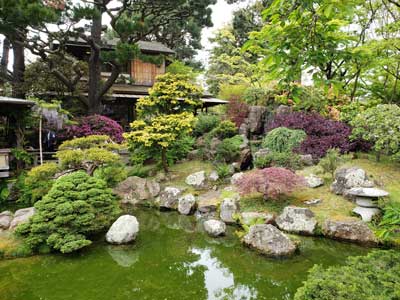Large urban park of public grounds 20 percent larger than Central Park in New York City, is the third most-visited city park in the United States after Central Park and the Lincoln Memorial
California Academy of Sciences
Monday to Saturday: 9:30 am to 5 pm
Sunday: 11 am to 5 pm
All guests must reserve timed-entry tickets in advance of their visit
Some exhibits, including Naturalist Center, Curiosity Grove, and Discovery Tidepool, will remain temporarily closed due to Covid
Conservatory of Flowers
Tuesday to Sunday: 10am to 4:30pm
de Young Museum
Tuesday to Sunday: 9:30am to 5:15pm
Closed Thanksgiving Day and Christmas Day
San Francisco Botanical Garden
Open Daily 7:30am
Last Entry 6pm
Closes One Hour After Last Entry
Japanese Tea Garden
Open Everyday
Winter 9am to 4:45pm
Summer 9am to 5:45pm
California Academy of Sciences
Ticket prices range from $32.00 to $40.00 based on day and time Conservatory of Flowers
Adults: $1.00
Youth (ages 12-17): $7.00
College Students (w ID): $7.00
Seniors (ages 65+): $7.00
Children (ages 5-11): $3.00
Children (4 & under): Free
San Francisco Resident with ID
All Adults (Tues to Sun): $7.00
Youth (ages 12-17): $4.00
College Students (w ID): $4.00
Seniors (ages 65+): $4.00
Children (ages 5-11): $2.00
Children (4 & under): Free
de Young Museum
Adults: $15.00 Seniors (65+): $12.00 Students (w/ valid ID): $6.00 Youth (17 and under): Free San Francisco Botanical Garden
Adults: $10.00
Youth & Seniors (Ages 12-17 and 65+): $7.00
Children (Ages 5-11): $3.00
Toddler (Ages 4 and under): Free
Families (2 adults and all children under 17 residing in the same household): $21.00
Japanese Tea Garden
Adult: $7.00
Senior (Age 65+) - with ID: $4.00
Youth (Age 12-17): $4.00
Children (Age 5-11): $3.00
Children under 5: FREE
Head southwest on Market St toward 12th St. Turn right onto Haight St. Turn right onto Octavia Blvd. Turn left onto Fell St. Slight right to stay on Fell St. Turn left onto Stanyan St. Turn left onto Oak St
Overview
Golden Gate Park, located in San Francisco, California, is a large urban park consisting of 1,017 acres (412 ha) of public grounds. It is administered by the San Francisco Recreation & Parks Department, which began in 1871 to oversee the development of Golden Gate Park. Configured as a rectangle, it is similar in shape to but 20 percent larger than Central Park in New York City, to which it is often compared. It is over three miles (4.8 km) long east to west, and about half a mile (0.8 km) north to south. With 24 million visitors annually, Golden Gate is the third most-visited city park in the United States after Central Park and the Lincoln Memorial.
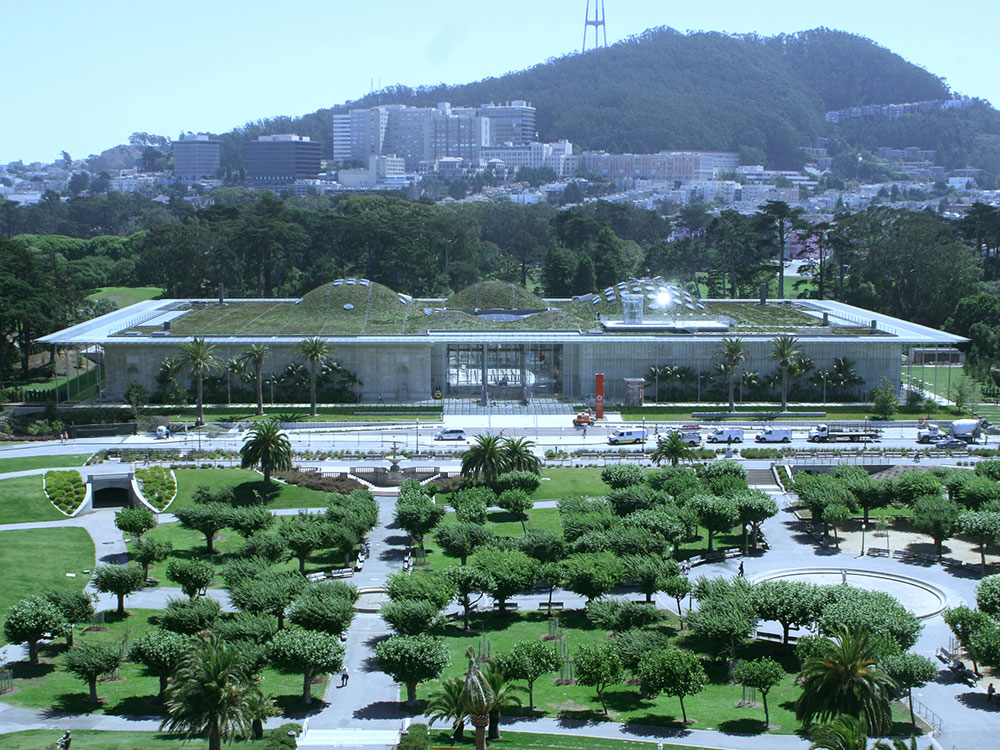
A sliver of park at the far east end of Golden Gate Park, the Panhandle, lies north of Haight-Ashbury, and it was the site of the Human Be-In of 1967, preceding the Summer of Love.
Music Concourse area
The Music Concourse is a sunken, oval-shaped open-air plaza originally excavated for the California Midwinter International Exposition of 1894. Its focal point is the Spreckels Temple of Music, also called the "Bandshell," where numerous music performances have been staged. During the fall, spring, and summer seasons, various food trucks are often parked behind the Bandshell, providing local food options to visitors of the Music Concourse. Parkwide bicycle and surrey rentals are also available behind the bandshell and at Haight and Stanyan on the east edge of Golden Gate Park. The area also includes a number of statues of various historic figures, four fountains, and a regular grid array of heavily pollarded trees. Since 2003, the Music Concourse has undergone a series of improvements to include an underground 800-car parking garage and pedestrianization of the plaza itself. It is surrounded by various cultural attractions, including:
De Young Museum
Named after M. H. de Young, the San Francisco newspaper magnate, the De Young Museum is a fine arts museum that was opened in January 1921. Its original building, the Fine Arts Building, was part of the 1894 Midwinter Exposition, of which Mr. de Young was the director. The Fine Arts Building featured several artists, twenty-eight of whom were female. One of these revolutionaries was Helen Hyde, who is featured in the De Young Museum today. Once the fair ended, the Egyptian-styled building remained open "brimful and running over with art." Most of these pieces were paintings and sculptures purchased by De Young himself, and others were donations of household antiques from the older community, which were "more sentimental than artistic." By 1916, the Fine Arts Building's collection had grown to 1,000,000 items, and a more suitable museum was necessary.
Construction to build a new museum began in 1917. With funds donated by De Young, and Louis Mullgardt as head architect, the De Young Museum was completed in 1921 in a "sixteenth century Spanish Renaissance design, with pale salmon colored façades that were burdened with rococo ornamentation." At its center was a 134-foot tower from which its wings extended. At the entrance was the Pool of Enchantment, which consisted of the sculptured Indian boys created by M. Earl Cummings. The museum contained four wings: the East Wing (featuring ever-changing paintings, sculptures and photography by artists such as Vincent Van Gogh); the Central Wing (famous American and European work); the Northeast wing (Asian collections); and the West Wing (artistic history of San Francisco).
The original De Young Memorial Museum stood for most of the twentieth century, until 2001 when it was completely rebuilt, reopening in 2005. The head-architects, Jacques Herzog and Pierre de Meuron, when asked about their design, said they wanted to create a place "where the art would be less hierarchically presented - more like contemporary art than like bijoux." The building is mostly constructed of copper, and its unique design was created with the idea that the "building would be enhanced not only by sunlight but also by San Francisco's constant fog." Since the opening of the De Young in 1921, its galleries have mostly changed, but some of the art originally featured during the fair and in the early twentieth century still exists in the museum today. The galleries of Asian art have since been relocated, but the De Young still features American art, Modern art, African art, textiles and sculptures, and special alternating exhibitions.
Academy of Sciences
The California Academy of Sciences was founded in 1853, just three years after California was made a state, making it the oldest scientific institution in the western United States. Evolutionist Charles Darwin corresponded on the initial organization of the early institution. The original museum consisted of eleven buildings built between 1916 and 1976 located on the former site of the 1894 Midwinter Fair's Mechanical Arts Building in Golden Gate Park. The structure was largely destroyed in the 1989 earthquake and just three of the original buildings were conserved for the new construction: the African Hall, the North American Hall, and the Steinhart Aquarium. The new building opened in 2008 at the same location in the park. The present building encompasses 37,000 square meters and includes exhibits of natural history, aquatic life, astronomy, gems and minerals, and earthquakes.
The academy also contains a 2.5-acre living roof with almost 1.7 million native California plants and domes that cover the planetarium and rainforest exhibitions. The soil of the roof is six inches deep, which reduces storm water runoff by more than 90% and naturally cools the interior of the museum, thereby reducing the need for air-conditioning. The glass panels of the living roof also contain cells that collect more than 5% of the electricity needed to power the museum. Due to its eco-friendly materials and natural sources of energy, the California Academy of Sciences has been named the country's only LEED-platinum certified museum, granted by the U.S. Green Building Council.
Japanese Tea Garden
The Japanese Tea Garden is the oldest public Japanese garden in the United States and occupies five of the 1,017 acres (412 ha) of the Golden Gate Park. It currently stands adjacent to the de Young Museum and is rumored to be the introduction site of the fortune cookie to America.
Conservatory of Flowers
The Conservatory of Flowers opened in 1879 and stands today as the oldest building in Golden Gate Park. The Conservatory of Flowers is one of the largest conservatories in the US, as well as one of few large Victorian greenhouses in the United States. Built of traditional wood and glass panes, the Conservatory stands at 12,000 square feet and houses 1,700 species of tropical, rare and aquatic plants. Though it wasn't originally constructed, William Hammond Hall included the idea of a conservatory in his original concept for the design of the park. The idea was later realized with the help of twenty-seven of the wealthiest business owners in San Francisco.
Rooms within the Conservatory
The Potted Plants Gallery follows Victorian architecture and the 19th century idea of displaying tropical plants in non-tropical parts of the world.
The Lowlands Gallery contains plants from the tropics of South America (near the equator).
The Highlands Gallery contains native plants from South to Central America.
The Aquatic Plants room is similar in conditions as those near the Amazon River.
Beach Chalet
The two-story Beach Chalet faces the Great Highway and Ocean Beach at the far western end of the park. It contains several restaurants and murals from the 1930s.
Windmills
Before the construction of its windmills, Golden Gate Park paid the Spring Valley Water Works up to 40 cents per 1000 gallons of water. To avoid this expense the North (Dutch) Windmill was commissioned in 1902 when Superintendent John McLaren deemed the Park's pumping plant insufficient to supply the additional water essential to the life of the Park. A survey and inspection of the vast area west of Strawberry Hill revealed a large flow of water toward the ocean. The North windmill was constructed to reclaim the drainage towards the Pacific Ocean and direct fresh well water back into the park. Alpheus Bull Jr., a prominent San Franciscan, designed the North Windmill. The Fulton Engineering Company received the bid for the ironwork, and Pope and Talbot Lumber Company donated sails ("spars") of Oregon pine. The North Windmill was installed, standing 75 feet tall with 102-footlong sails. The windmill pumps water an elevation of 200 feet with a capacity of 30,000 gallons of water per pump per hour, supplying and replenishing Lloyd Lake, Metson Lake, Spreckels Lake, and Lincoln Park. The water is pumped from the valley into a reservoir on Strawberry Hill. From there the water runs downhill into Falls and Stow Lake. The North Windmill was successful, causing another system of wells and a second windmill at the southwestern corner of the Park to be recommended. Samuel G Murphy provided $20,000 from his own means to erect the windmill. The South Windmill (Murphy Windmill) stands as the largest in the world, having the longest sails in the world since its construction, with the ability to lift 40,000 gallons of water per hour.
Statues
A statue of longtime park superintendent John McLaren stands in the Rhododendron Dell. McLaren had this statue hidden and it was only placed in the dell after his death. Other statues of historical figures are also located throughout the park, including Francis Scott Key, Robert Emmet, Robert Burns, the double monument to Johann Goethe and Friedrich Schiller, General Pershing, Beethoven, Giuseppe Verdi, President Garfield, and Thomas Starr King. A bronze statue of Don Quixote and his companion, Sancho Panza kneeling to honor their creator, Cervantes, combines historical and fictitious characters. At the Horseshoe Court in the northeast corner of the park near Fulton and Stanyan, there is a concrete bas-relief of The Horseshoe Pitcher by Jesse "Vet" Anderson, a member of the Horseshoe Club. Across from the Conservatory of Flowers is Douglas Tilden's The Baseball Player.
Prayer Book Cross
The Prayer Book Cross, also known as Drake's Cross, is a sandstone Celtic-style cross measuring 60 feet tall. Erected by Episcopalians in 1894, it commemorates Sir Francis Drake's first landing on the West Coast in 1579, the first use of the Book of Common Prayer in California and (from the inscription) the "First Christian service in the English tongue on our coast." It is located near Rainbow Falls on Cross Over Drive between John F. Kennedy Drive and Park Presidio Drive. The cross was meant to be visible to ships at sea but has since been overgrown by trees. A gift of George W. Childs, it was designed by the architectural firm Coxhead & Coxhead of San Francisco. Historian Richard White described the Prayerbook cross as a "monument to white supremacy" erected in "an attempt to enshrine Anglo-Saxonism" during a time "when, with deep worries about the racial identity of a heavily immigrant city, many Californians became crazed over the long-dead Drake".
Carousel
An ornate carousel displaying a bestiary is housed in a circular building near the children's playground. The carousel was built in 1914 by the Herschell-Spillman Company. The building was occupied by three previous carousels before the current attraction was purchased by Herbert Fleishhacker from the Golden Gate International Exposition in 1941. The 1914 carousel has undergone several major renovations, the first, a transition from steam to electric power with the assistance of the PG&E Company. In 1977 the carousel closed for safety concerns and The San Francisco Arts Commission hired local artist Ruby Newman to oversee the artistic restoration. Her crew of craftspeople restored the badly deteriorated carousel and she hand painted all animals, chariots, and decorative housing (she holds the copyright). The carousel was re-opened in 1984. Presently, the carousel includes sixty two animals, a German Band Organ, and painted landscapes of the bay area by Ruby Newman. Two of the animals, a goat and an outside stander horse, are by the Dentzel Wooden Carousel Company.
Encompassing the carousel is the Koret Playground, originally the Children's Quarters, which was envisioned to be a primary feature in the Golden Gate Park's beginnings. Funded by Senator William Sharon, the facility was finished in 1888, and designated a recreational space for children and their mothers. At the time, it was the first public children's playground in the United States; offering swings, indoor enclosures, open sitting areas and the original carousel to community youth.
San Francisco Botanical Garden at Strybing Arboretum
The San Francisco Botanical Garden was laid out in the 1890s, but funding was insufficient until Helene Strybing willed funds in 1926. Planting began in 1937 with WPA funds supplemented by local donations. This 55 acres (22 ha) arboretum contains more than 7,500 plant species. The arboretum also houses the Helen Crocker Russell Library, northern California's largest horticultural library.
Due to the unique climate of San Francisco and Golden Gate Park, the plants in the San Francisco Botanical Garden range from a variety of different national origins, some of them no longer existing in their natural habitats. Areas of origin include but are not limited to Africa, Australia, New Zealand, and Central and South America. These regions of origin go from desert to tropical. In addition, some native California species are housed in the garden as well, such as Redwood trees. Overall, the tradition of these diverse gardens that eventually served to inspire the San Francisco Botanical Garden comes originally from China, Europe, and Mexico.
Lakes
Stow Lake surrounds the prominent Strawberry Hill, now an island with an electrically pumped waterfall. The lake was named for W.W. Stow who gave $60,000 for its construction. Strawberry Hills' waterfall was named Huntington Falls after its benefactor Collis P. Huntington. Stow was the first artificial lake constructed in the park and Huntington was the park's first artificial waterfall. The falls are fed by a reservoir located atop Strawberry Hill. Water is pumped into the reservoir from Elk Glen Lake, the South Windmill, wells, and the city's water supply to keep the system of lakes flowing eastward from Stow.
Rowboats and pedalboats can be rented at the boathouse. Much of the western portion of San Francisco can be seen from the top of this hill. The reservoir at its top also supplies a network of high-pressure water mains that exclusively supply specialized fire hydrants throughout the city. The lake itself also serves as a reservoir from which water is pumped to irrigate the rest of the park should other pumps stop operating. In the past the Hill was also topped by Sweeny Observatory, but the building was ruined by the 1906 earthquake and plans to replace it were not approved by park commissioners.
Two bridges connect the inner island to the surrounding mainland: the Roman Bridge and the Stone (or Rustic) Bridge.
Spreckels Lake / model boat facility
Spreckels Lake is an artificial reservoir behind a small earthen dam that lies on the north side of the Golden Gate Park between Spreckels Lake Drive and Fulton Street to the north, and John F. Kennedy Drive to the south and named after sugar-fortune heir and then San Francisco Parks Commissioner Adolph B. Spreckels. Built between 1902 and 1904 at the request of the San Francisco Model Yacht Club specifically as a model boating facility, the lake was first filled in February 1904 and opened March 20, 1904. One can usually find both 'sail driven,' self-guided Yachts and electric or gas/nitro powered radio-controlled model boats of many types and designs plying the lake's waters most times of year.
Elk Glen Lake is the park's deepest ornamental lake, measuring over 6 ft. deep on average. The lake acts as a reservoir for water from the Reclamation Plant before it is pumped to either Stow Lake or the reservoir atop Strawberry Hill.
Mallard Lake is landlocked and not a part of the park's irrigation system.
Metson Lake lies west of Mallard Lake and east of the Chain of Lakes. This body of water has a capacity of over 1.1 million gallons that overflow into South Lake or can be redirected elsewhere for irrigation purposes.
Chain of Lakes Many naturalistically landscaped lakes are placed throughout the park: several are linked together into chains, with pumped water creating flowing creeks. Out of the original 14 natural marshy lakes within the sand dunes Golden Gate Park was built in, only 5 remain, three of which are the Chain of Lakes. The three lakes, North, Middle, and South Lake, are located along the Chain of Lakes Drive.
North Lake is the largest of the three, and is known for its water birds that often live on the small islands within the lake. Some of the birds spotted are egrets, belted kingfishers, ducks, and great blue herons. It is surrounded by a paved walkway that is often used by families, joggers, and dog walkers.
Middle Lake is particularly known for bird-watching due to the visits of migrant species of birds like tanagers, warblers and vireos. It is surrounded by a dirt trail and vegetation. The lake resembles the marshes that existed before Golden Gate Park, and is known for being a more remote and romantic setting.
South Lake is the smallest of the three lakes, and borders Martin Luther King Jr. Drive. This lake is the smallest in the Chain of Lakes. Its water is sourced from either a direct flow from Metson Lake, or by Stow Lake water released by a valve. It does not contribute to irrigation in the park but it does feed into Middle Lake. Its only noteworthy bird population is its ducks.
Bison Paddock
Bison (Bison bison) have been kept in Golden Gate Park since 1891, when a small herd was purchased by the park commission. At the time, the animal's population in North America had dwindled to an all-time low, and San Francisco made a successful effort to breed them in captivity. In 1899, the paddock in the western section of the park was created. At its peak and through a successful captive breeding program, more than 100 calves were produced at Golden Gate Park, helping preserve the iconic bison population numbers in North America, which has been critical to the culture and livelihood of Native Americans.
Hippie Hill
Nestled in the trees between the Conservatory of Flowers and Haight Street, Hippie Hill displays a lifestyle unique to San Francisco. East of the Golden Gate Park tennis courts, the green space known as Hippie Hill is a gentle sloping lawn just off of Kezar Drive and overlooking Robin Williams Meadow, with Eucalyptus and Oak on either side. Additionally, the hill contains several uncommon trees: coast banksia, titoki, turpentine, and cow-itch.
Hippie Hill has been a part of San Francisco's history, namely the Summer of Love, in 1967, a large counterculture movement that partially took place on the hill. With its close proximity to Haight Street, the main site of the Summer of Love, the movement often overflowed onto the hill. During this era, people gathered in the area to connect with one another through many activities, including the playing of music, consumption of LSD and marijuana, and expression of hippie ideals. With time, area residents began to complain of the flower children's open sexuality, nude dancing, panhandling, and excess litter.
Through this movement, music became to have its own history on the hill as well. Musicians and bands such as Janis Joplin, the Grateful Dead, Jefferson Airplane, and George Harrison all played free shows for the public near by. Today, improvised drum circles form on the weekends where people come together and fill the hill with a constant beat for hours on end. A space filled with their culture, the hill played a major part in the hippies' ability to openly use drugs and express themselves as the police adopted a policy of looking the other way.
The National AIDS Memorial Grove
In the decades following the first reports of AIDS in the United States in 1981, Americans were overwhelmed with the devastation of the AIDS epidemic. In 1988 a few San Francisco residents belonging to communities hit hard by the AIDS epidemic envisioned a place of remembrance for those who had lost their lives to AIDS. They imagined a serene AIDS memorial where people could go to heal. Renovation for the National Aids Memorial Grove began in September 1991 and continues today as communities are constantly working to improve it. Located at 856 Stanyan Street, in the eastern portion of Golden Gate Park, the Grove stretches across seven acres of land. In 1996, due to Nancy Pelosi's efforts, the "National AIDS Memorial Grove Act" was passed by Congress and the President of the United States, Bill Clinton, which officially made those seven acres of Golden Gate Park the first AIDS memorial in the United States. Then in 1999, it earned the Rudy Bruner Silver Medal Award for excellence in the urban environment.
Shakespeare Garden
The Shakespeare Garden is located directly southwest of the California Academy of Sciences. It is a tribute to William Shakespeare and his works, decorated with flowers and plants that are mentioned in his plays. The entrance is an ornate metal gate that says "Shakespeare Garden" intertwined with vines. Directly past the entrance is a walkway overarched with trees and lined with small flowers and a sundial in the center. The main area has a large moss tree and benches. At the end of the garden there is a wooden padlocked shelf containing a bust of William Shakespeare himself. The cast was made and given to the garden by George Bullock in 1918. Around the bust, there are four plaques, originally six, with quotes from Shakespeare.
Alice Eastwood, the director of botany from the California Academy of Sciences at the time, came up with the idea for the garden in 1928, and it was carried out by Katherine Agnes Chandler. It however is not unique, as there are several Shakespeare gardens around the world, including "Cleveland, Manhattan, Vienna, and Johannesburg." The garden is a popular spot for weddings. There are over 200 plants from Shakespeare's works.
Rose Garden
The Rose Garden is found between John F. Kennedy Drive and Park Presidio Boulevard.
Dahlia Garden
The Dahlia Garden is found just to the East of the Conservatory of Flowers, and is maintained by volunteers from the Dahlia Society of California, founded in 1917.
Sports and recreation
Golden Gate park contains many areas for sports and recreation including tennis courts, soccer fields, baseball fields, lawn bowling fields, an angling and casting club, a disc golf course, horseshoe pits, an archery range, the polo field, and Kezar Stadium. Golden Gate park formed the first Lawn Bowling Club in the United States in 1901, with an Edwardian style clubhouse constructed in 1915.
Kezar Stadium
Kezar Stadium was built between 1922 and 1925 in the southeast corner of the park. It hosted various athletic competitions throughout its existence. It served as the home stadium of the San Francisco 49ers of the AAFC and NFL from 1946 to 1970, and for one season in 1960, it hosted the Oakland Raiders of the AFL. The 59,000-seat stadium was demolished in 1989 and replaced with a modern 9,044-seat stadium, which includes a replica of the original concrete arch at the entryway.
The Polo Field
The sport of polo came to California in 1876, when the California Polo Club was established with help of Bay Area native, Captain Nell Mowry. Today, polo is not regularly played on the Polo Field, but from 2006 to 2010 Polo in the Park was hosted annually.
The field has an extensive history with music and events. Because of the location and size of the Polo Fields, various events are commonly held on the field. Historically, many major music festivals took place in the park, including the Human Be-In, which featured bands like the Grateful Dead and Jefferson Airplane. More contemporary music festivals such as the Outside Lands and Hardly Strictly Bluegrass also take place on or nearby the Polo Fields. One of the largest public gatherings in San Francisco took place in the Polo Fields—a public Rosary in 1961 with 550,000 people. Public political events were also held at the field, such as the anti-Vietnam War rally in 1969 and the Tibetan Freedom Concert in 1996.
This article uses material from the Wikipedia article "Golden Gate Park", which is released under the Creative Commons Attribution-Share-Alike License 3.0
Featured Locations

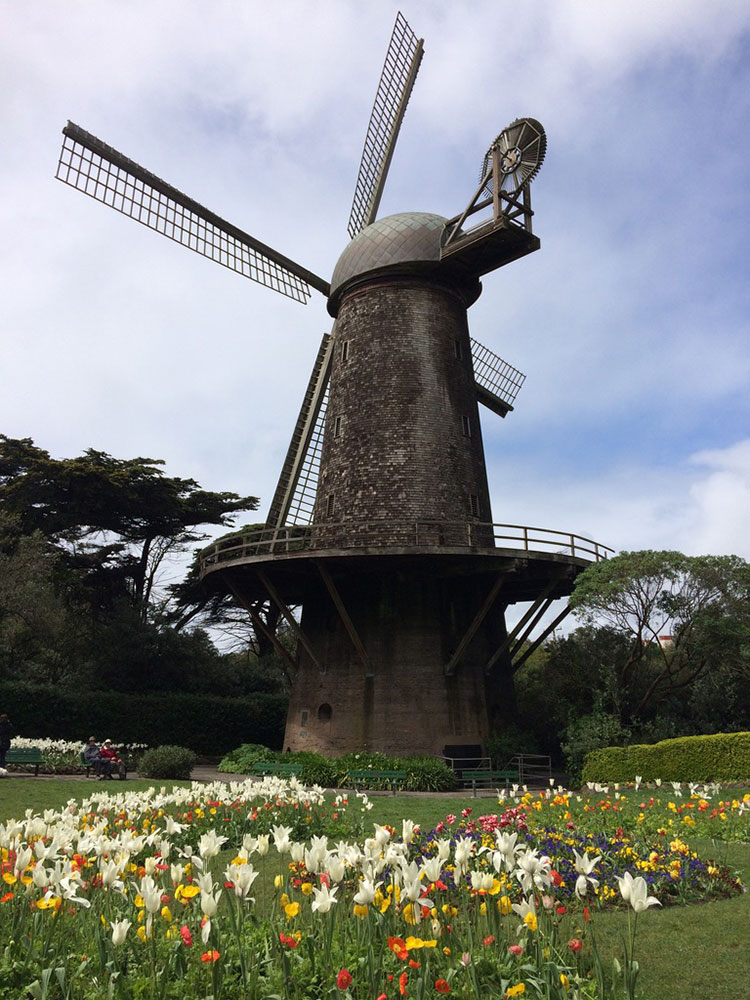 Hu Nhu, CC BY-SA 4.0, via Wikimedia Commons; Image Size Adjusted
Hu Nhu, CC BY-SA 4.0, via Wikimedia Commons; Image Size Adjusted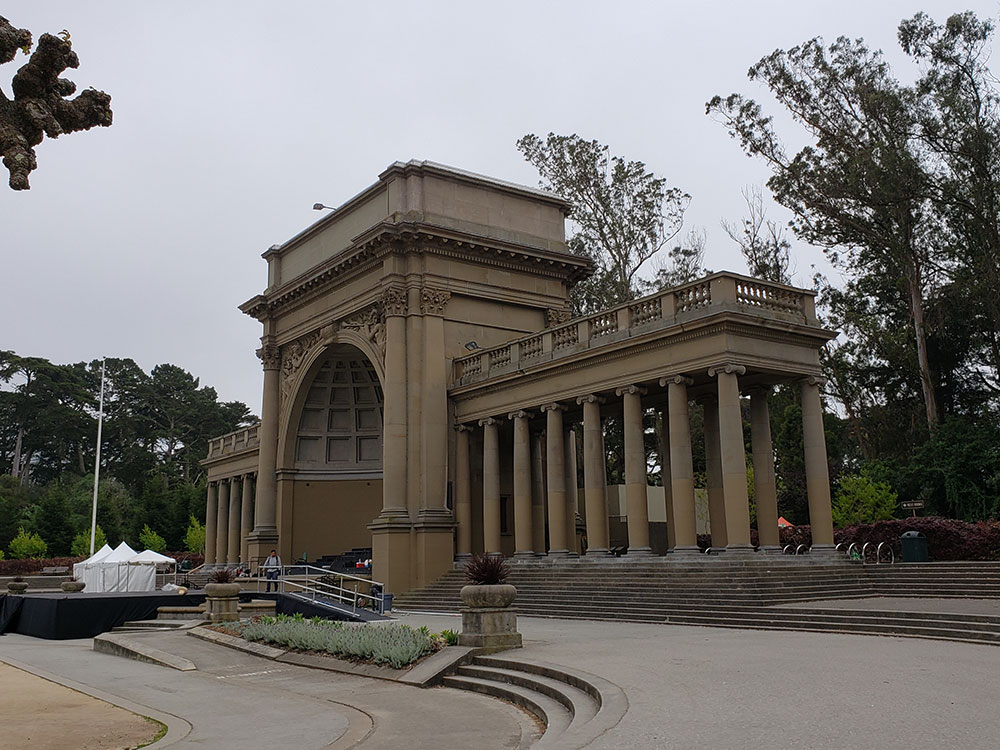
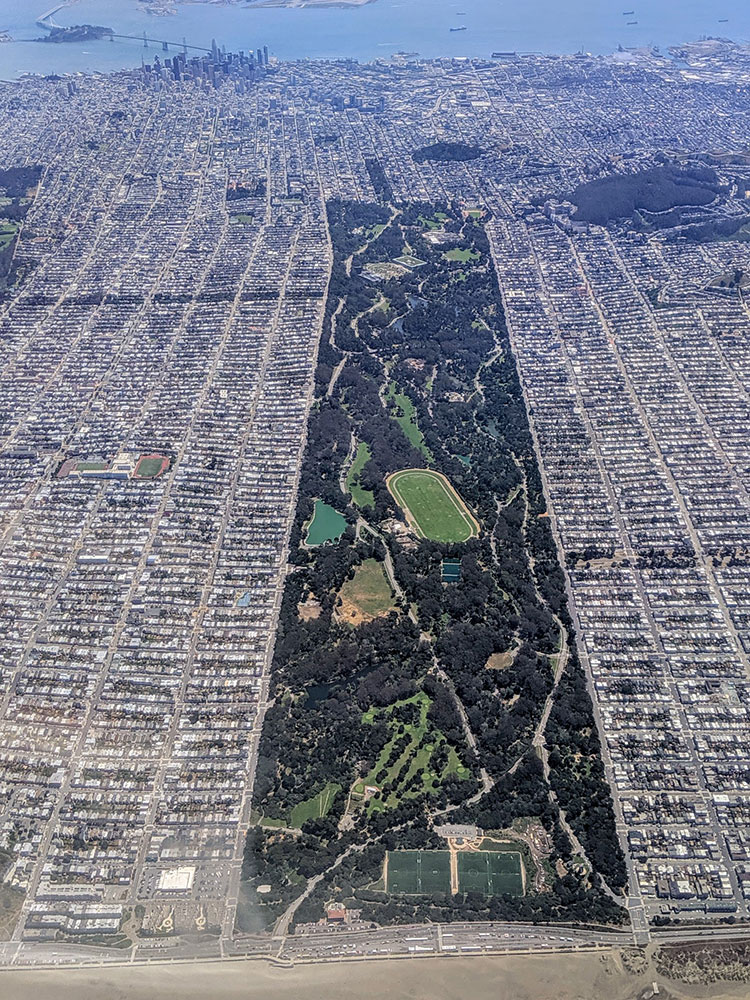 Dicklyon, CC BY-SA 4.0, via Wikimedia Commons ; Image Size Adjusted
Dicklyon, CC BY-SA 4.0, via Wikimedia Commons ; Image Size Adjusted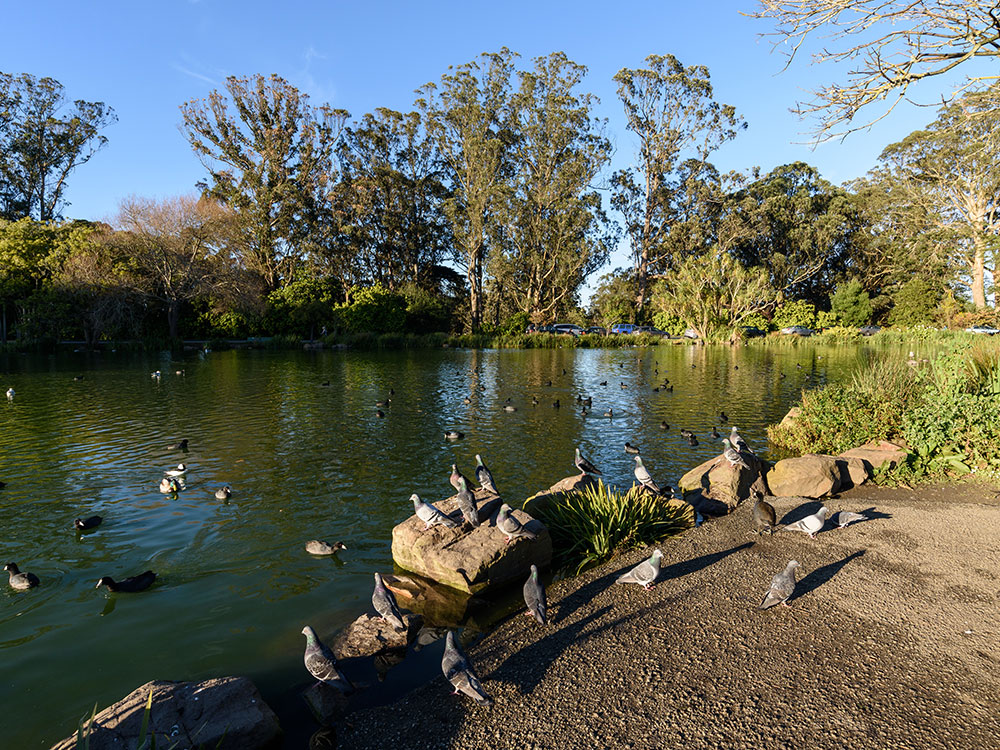
_(cropped)-1000.jpg) Eugene Kim from San Francisco, USA, CC BY 2.0, via Wikimedia Commons ; Image Size Adjusted
Eugene Kim from San Francisco, USA, CC BY 2.0, via Wikimedia Commons ; Image Size Adjusted-1000.jpg)
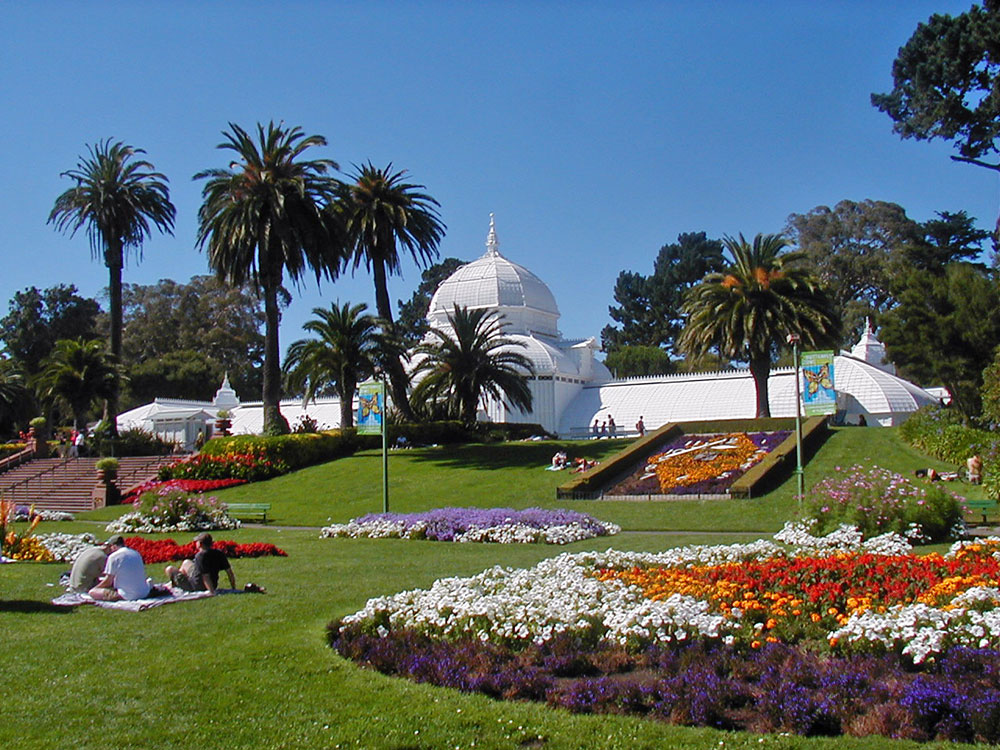 WolfmanSF, CC BY-SA 3.0, via Wikimedia Commons; Image Size Adjusted
WolfmanSF, CC BY-SA 3.0, via Wikimedia Commons; Image Size Adjusted
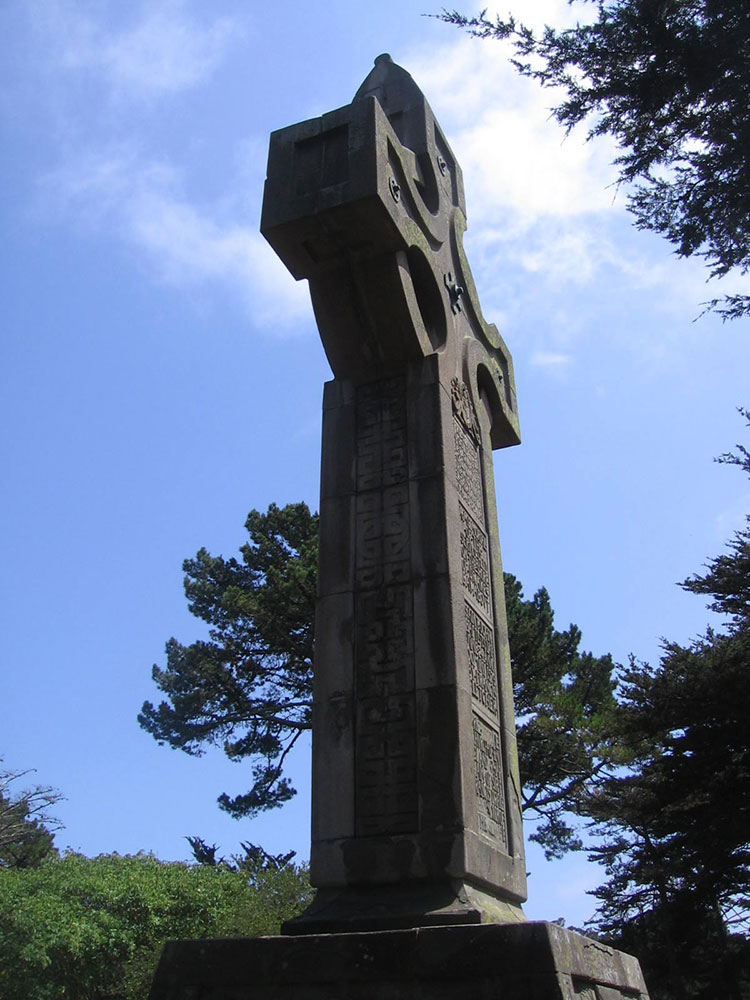 MikeVdP, CC BY-SA 4.0, via Wikimedia Commons ; Image Size Adjusted
MikeVdP, CC BY-SA 4.0, via Wikimedia Commons ; Image Size Adjusted